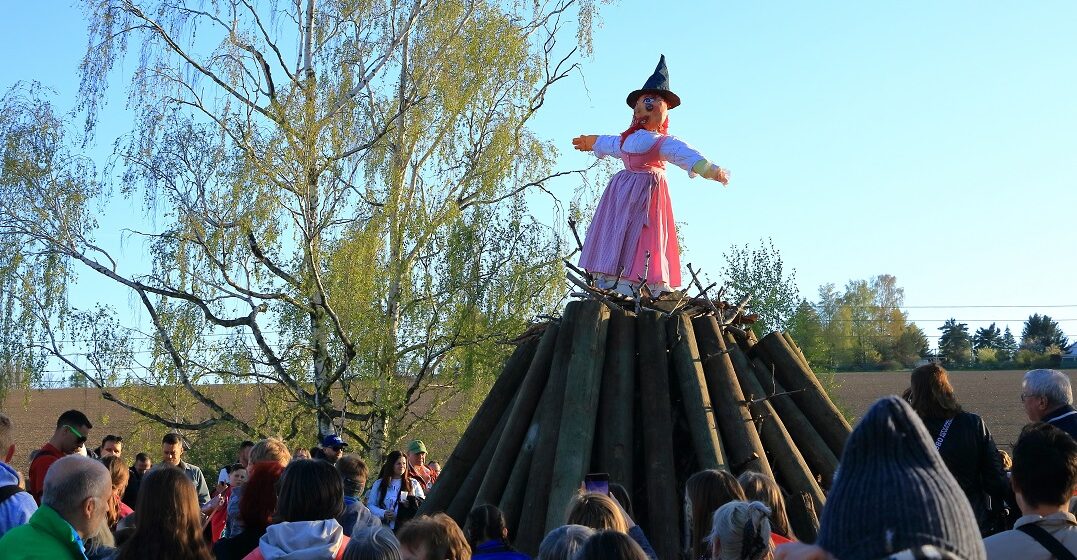Published on December 6, 2023

Witches’ Night in Germany: An enchanting experience

Walpurgisnacht, also called Hexennacht or Hexensabbat, is a holiday celebrated on April 30 in parts of Germany. Inspired by folkloric and pagan traditions, Walpurgisnacht (which roughly translates to “Witches’ Night”) presents the opportunity to rediscover long-lost rituals and be enchanted by a uniquely German strain of magic that has endured through the centuries.
So, let’s get out our broomsticks and put on our pointed hats for a night of witchcraft and history — the German way.
Walpurgisnacht has roots in ancient pagan traditions, symbolizing the change from winter to spring. Gradually, the pagan holiday was absorbed into Christian customs and given a name in honor of Saint Walpurga.
Though it happens six months earlier in the calendar year, Walpurgisnacht is similar to Halloween. On this night, the boundary between our world and the spirit realm is said to weaken, enabling spirits to move freely between the two worlds.
And their motives may not be entirely benevolent. On top of the Brocken, the highest peak in the Harz Mountains, it’s said that witches meet with the devil and scheme mischief for the upcoming year.
Walpurgisnacht was originally known as Beltane, a pagan celebration marking the transition from winter to spring, with rituals symbolizing the rejuvenation of life. As Christianity spread, the Church incorporated popular festivities by repurposing the rituals for its own ends.
The festival derives its name from Saint Walpurga. Renowned for her Christian missionary work in Germany as well as for warding off evil spells, the English saint became associated with the pagan celebration following her canonization in 870 AD.
The witch hunts in Germany, occurring primarily between the 15th and 18th centuries, intensified the fear and superstition surrounding Witches’ Night, keeping the traditions very much alive.
With the rise of reason and science, the festival’s significance started to wane. But German Romanticism, notably represented by Goethe’s seminal work Faust, helped to maintain the charm of cultural relics like Walpurgisnacht Today, the Walpurgisnacht festival in Germany has transformed into a largely tourist-driven event, though its pagan and Christian roots give it a very special place among other German festivals.
Many Walpurgisnacht traditions have ancient roots, dating back to the pagan celebrations of spring. These celebrations, initially meant to welcome warmer weather and fertility after a long winter, took on a completely different meaning when adapted by Christian communities in later times.
Dressed in scary costumes, Christians of old lit bonfires on Witches’ Night to ward off malevolent spirits. Some even symbolically burned a straw witch or banged pots to keep the evil at bay. Others hung sprigs of foliage from the doors of their houses — not as offerings to deities, but as safeguards against something far more sinister.
Ankenschnitt, a type of bread with butter and honey, was often left out as an offering for phantom hounds, distracting them from bothering the inhabitants. Additionally, there was the Feuersprung, a ritual in which daring individuals (often young lovers) jumped over a bonfire as a symbolic act intended to secure good luck and fertility.
Luckily for modern witches, sorcerers and pranksters, May 1 is a public holiday in Germany. Some May Day traditions, like dancing around maypoles and crowning the May Queen, have become part of the celebrations for Walpurgisnacht.
The grandest celebrations unfold in the Harz region — notably at the Brocken — and feature bonfires, maypole dancing, eating and plenty of drinking. What an opportunity to immerse yourself in German culture and test your German skills!
Just beware of getting caught up in mischief. In certain areas of Germany, teenagers wander around the neighborhoods at night, pulling pranks like toilet-papering cars and hiding doormats.
From pagan magic to Christian protection, Walpurgisnacht boasts a rich history. While the holiday’s meaning has evolved over the years, its peculiar traditions endure. This all but ensures an annual night packed with enjoyment and a spirited ambiance that beautifully blends ancient practices with modern revelry.